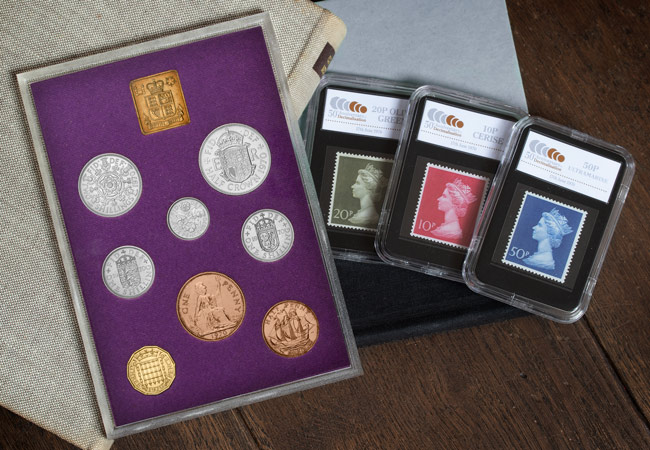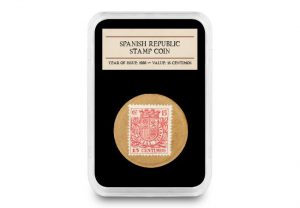Ancient Coins
Unboxing the ultimate tribute to Decimalisation
In my latest video I unbox the ultimate tribute to Decimalisation.
ONLY 125 collectors can own it worldwide, and 60% of the edition limit has already sold.
And I wanted to show you just why this set is proving to be such a hit with collectors.
After all, it is the perfect way to remember Decimal Day and the biggest change our coinage has ever seen.
If you’re interested…
EXPERT GUIDE: building a historic coin collection
One of the questions I get asked most, by my friends and others in the coin business, is: what is the best (and most affordable) way to build an enviable collection of historic coins?
There are so many fascinating coins in British history, it’s a question that is hard to answer. Where do you start!?
Which is why I’ve decided to put together an Expert Guide to building a collection of historic coins, by answering some of the questions I hear most often from collectors…
How far back can I go?
One of the questions collectors face when they first start collecting historic coins is: how far back can I go? Is a Victorian coin affordable, and did every monarch release coins?
As a general rule, coins tend to get more expensive the further back in time you go. Which is why owning a coin from our current monarch is the best place to start. You can then work your way back through other famous monarchs.
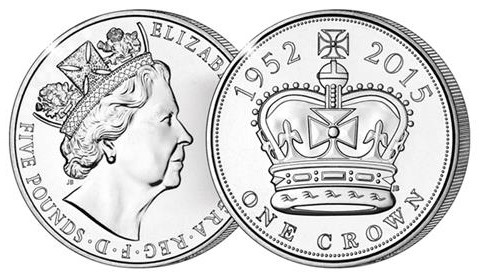
Most collectors can aim to collect coins from each monarch back to the 17th century. After the tumultuous leadership of Oliver Cromwell, Charles II reclaimed the throne and began a period of standardised coin issue. For most collectors it’s possible to collect coins back to this fascinating period in history without breaking the bank!
Which are the important monarchs?
A great coin collection should contain coins issued by famous monarchs, monarchs that changed the history of our nation and ones that revolutionised our coinage.
An obvious monarch is Queen Victoria – the monarch who built the largest Empire the world has ever seen and who oversaw some of the greatest changes our nation has ever experienced. And every collection should contain an important issue by our current monarch, Queen Elizabeth II, the longest reigning monarch in our nation’s history! And you can’t leave out George III, not only did he oversea a complete overhaul of our currency but he’s also our longest reigning King.
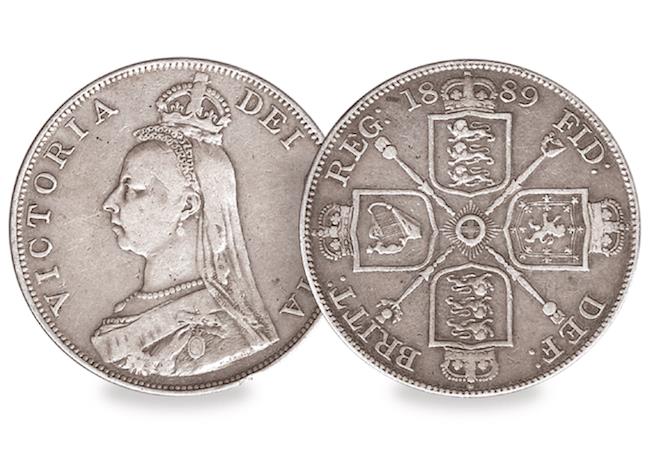
Those are just a few of the key monarchs, but once you start collecting you’ll find that each monarch has a fascinating story and a number of really interesting coin issues.
Base metal, Silver or Gold?
Gold has historically been seen as the pinnacle for collectors. But this famous metal comes with its difficulties. Gold coins were issued in much smaller numbers, and not every monarch released a standardised gold coin. Which means that to own a Gold coin from some monarchs is extremely difficult – for example George VI only issued a Sovereign for one year of his reign.
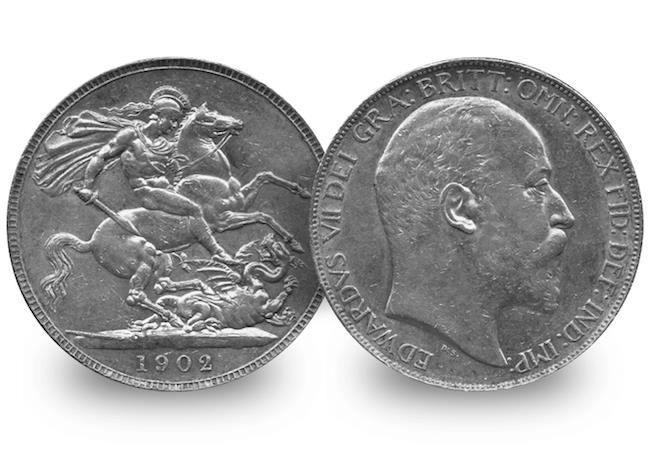
Base metal and Silver coins tend to be much more achievable for most collectors. Base metal coins (pennies, farthings and the like) tend to be less expensive, however because of their lower value the quality of coins can vary widely. Silver coins were issued by most monarchs, and because of their slightly higher value tend to be found in better grades.
How should I store my coins?
The wear and tear of an old coin is part of the appeal of collecting historic coins, but it’s important to protect your coins from any outside interference that could potentially discolour, wear or generally affect the condition of your coin.
I would recommend always storing your coins in capsules, and if possible in a tamperproof capsule that will guarantee the condition of your coin for generations to come. And as you build your collection, there’s nothing better than having a box with trays to keep your collection together for you to store and present.
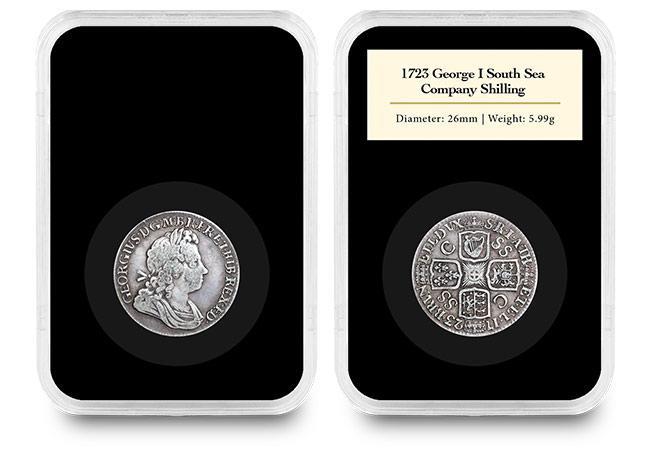
How much will it cost me?
For most collectors building a historic coin collection, one of the most confusing elements can be price. The prices for historic coins can vary widely – you might find an old Victorian penny at a car boot for less than £10 and then see what looks like the same coin selling for hundreds on an online auction site.
I’d always recommend purchasing carefully, preferably by making sure you either have an expert opinion or by ordering from a reputable retailer. By making sure you’re getting your coins from the right place, building a collection of Silver coins back to the 17th century is actually more affordable than many collectors realise – in fact most coins should cost between £100 and £500.
Lastly… have fun!
The most important part of collecting coins is having those coins in your hand and feeling the history your coin has carried with it over generations. So have some fun and get collecting!
If you would like to learn more about building your own historic coin collection, with some expert guidance, just fill out the form below. One of our team will be in contact with you soon:
Your message has been sent
Imagine using a cup, a stamp, or cardboard as a coin…
Today the coins you find in your change are all produced by the Royal Mint. It’s hard to imagine what life would be like if coins, and the metal to make them, disappeared.
When people have had to go to extreme lengths in the face of emergency, it has produced some of the most intriguing and interesting currencies around. And here are six of the most unusual currencies ever issued, and what drove people to create them.
The coins made from a drinking cup
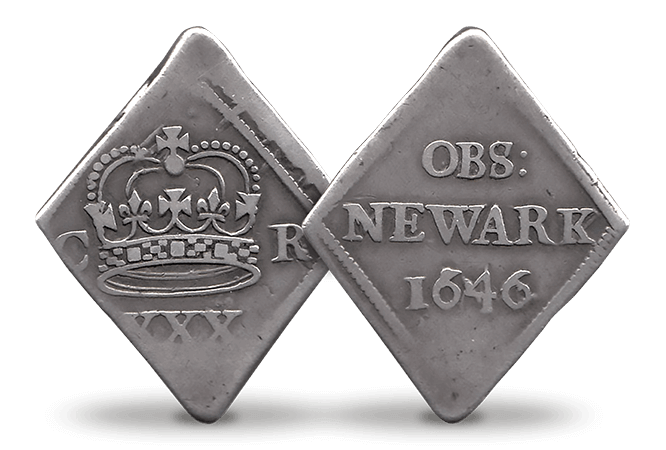
In 1646 in a town under siege, with no incoming money, the people of Newark needed to find a way to pay soldiers for protection. So they reached for whatever metal they had available to make coins – and that meant their cutlery! Silver cups and plates were surrendered, cut up into small diamond shaped pieces, and had a denomination stamped onto them.
Because of the way these coins were made, you could sometimes see the pattern of the cup or plate from which the coins were made. Understandably these coins, which surely belong in a museum, are hugely desirable among collectors and are rarely available.
The notes that were issued to be devalued
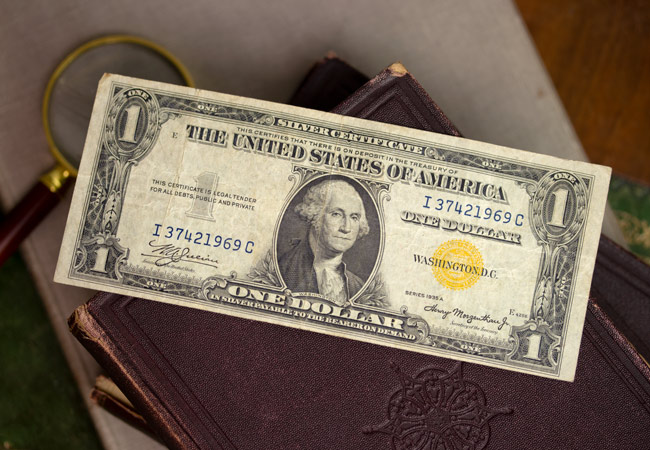
It seems odd that a government would issue money just for it to be devalued. But during WWII when the American army was based in North Africa this is exactly what happened. The American government was concerned that if the Germans were to mount a successful attack, they could take over the currency. Therefore, all notes used to pay soldiers based in North Africa had a yellow seal added to them. This meant that should the Germans take over, the notes could be easily identified by their yellow seal and instantly devalued.
The Russian stamps used as German propaganda
During WW1 the Russian government found it increasingly difficult to issue coins. Instead, they turned to ‘currency stamps’ printed on thin cardboard instead of normal stamp paper. Using stamps instead of coins was a way of saving precious metal for the war effort.
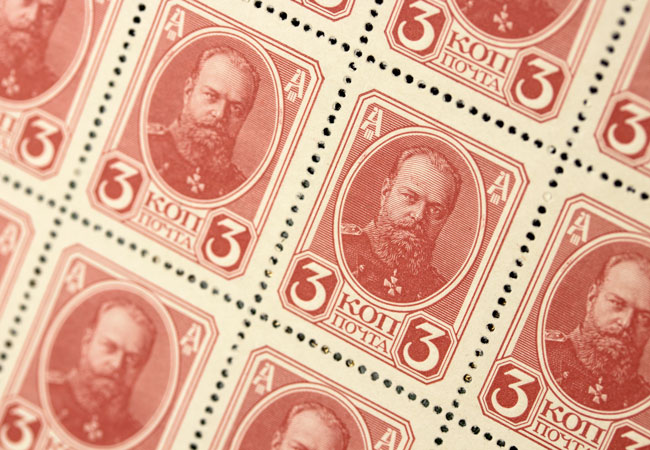
Several denominations of ‘currency’ were issued, with a statement on the reverse stating that each stamp had the circulating equivalent of Silver coins. However some of these stamps soon landed in the hands of Germans who counterfeited them but with one clever detail – the statement on the reverse was changed to an anti-Russian message. The idea was to destroy confidence in the Russian government and devalue the currency.
An unusual English denomination
George III’s reign is known for the vast number of interesting numismatic pieces issued, and the Bank of England emergency tokens are no different. Conflict in George III’s reign had caused financial panic, and thousands of people hoarded silver coins out of fear.
The Royal Mint’s limited ability to issue coins posed a problem as they could not make enough coins for the demand, so eyes turned to the Bank of England. An agreement was made that allowed the Bank to issue emergency currency. However technically speaking these were tokens and not coins, which is why they appear in the unusual denominations such as 1s 6d or 1 Dollar.
Why money was burnt in revolutionary France
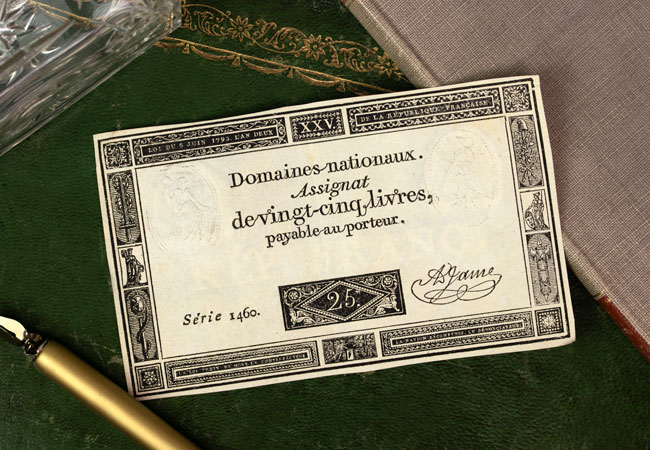
In revolutionary France in the early 1790s, the government issued paper money, known as Assignats, backed by the value of clergy property. The government continued to print money, and faced with an influx of counterfeits from Britain, the value of these Assignats soon reached a massive 45 Billion Livres, despite the value of clergy property only being 3 Billion Livres.
In 1796, the notes had lost all of their value and were publicly burned, to be replaced with a new paper money. Any of these surviving notes are incredibly rare as most of them were destroyed, making them very desirable among collectors.
How a Civil War turned a stamp into currency
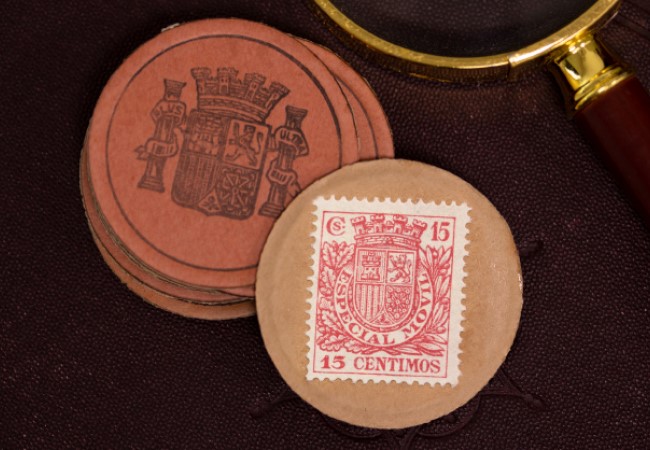
It’s hard to imagine a small paper stamp, issued over 80 years ago, being used to pay for goods and services. But in Spain in 1938 that’s exactly what happened.
The Civil War caused the public to hoard coins out of fear, and so they all but disappeared from circulation. Because metal was in limited supply, the government turned readily available stamps into ‘coins’. Unlike Russian emergency stamp currency, these stamps were welded onto a special board with the coat of arms printed onto the reverse. The stamp value gave these new ‘coins’ a denomination, and they were released into circulation to help towns and cities trade.
With such a delicate nature and small number, it’s no wonder that these coins are scarce and difficult to track down today.
Nowadays the Royal Mint is well suited to meeting our coin demands so it’s unlikely we’ll ever need to use stamps or cutlery in place of coins! Emergency currency is always a fascinating area for collectors, with some of the rarest and most unique issues having appeared out of difficult and troubled times. It’s not often that these emergency issues appear on the market – but it’s certainly worth keeping an eye out for them!
If you’re interested…
Today you can own one of these unusual and fascinating numismatic issues – a Spanish 15 Centimos ‘Coin’. There are only an extremely limited number of these issues available worldwide, and considering the fascinating story behind these issues, our stock is likely to be snapped up fast.

